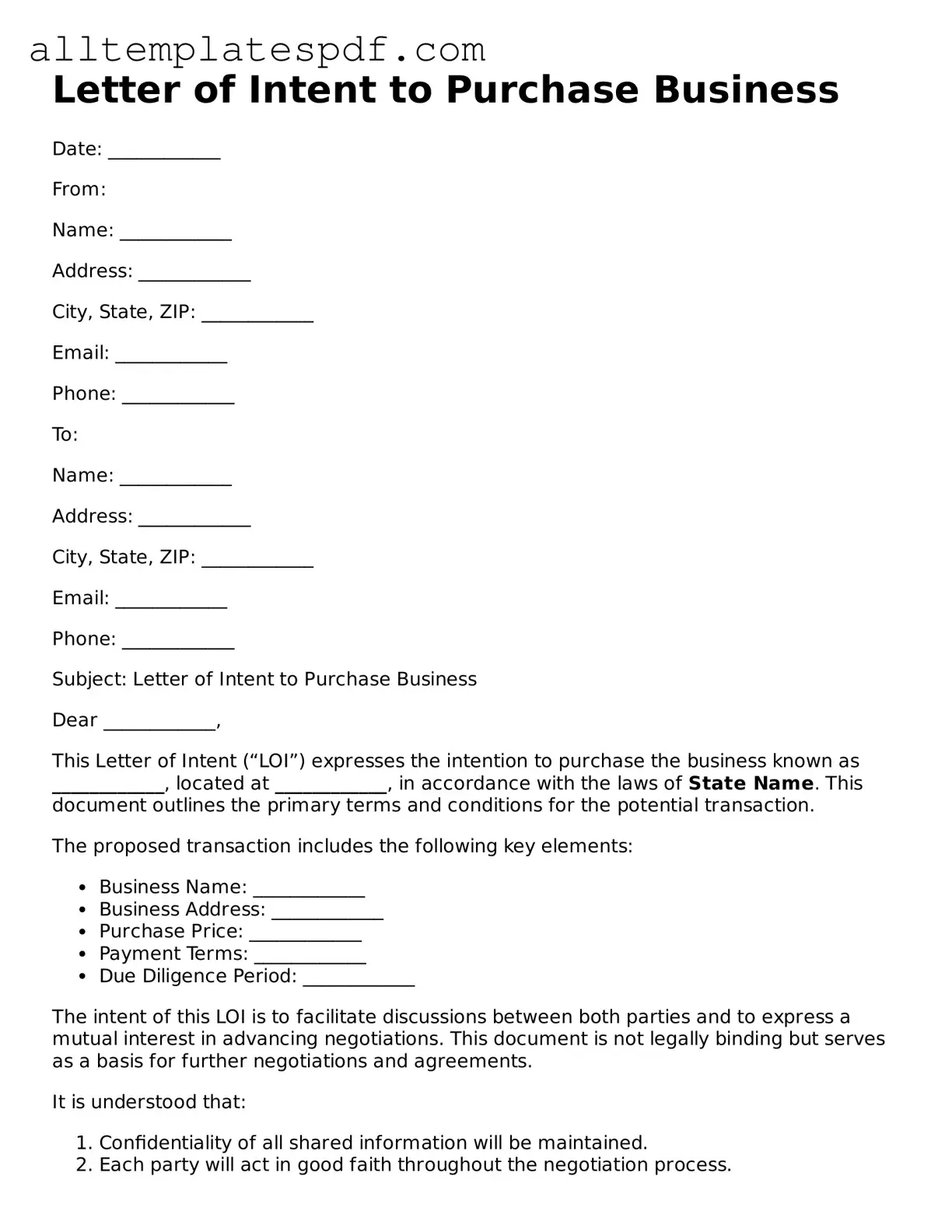Filling out a Letter of Intent (LOI) to Purchase a Business can be a crucial step in the buying process. However, many people make common mistakes that can lead to confusion or even derail the transaction. Understanding these pitfalls can help ensure a smoother experience.
One frequent mistake is not providing enough detail about the business being purchased. Buyers often assume that the seller knows what they are referring to. However, clarity is key. Including specific information about the business, such as its name, location, and type of operation, helps avoid misunderstandings later on.
Another common error is failing to outline the terms of the offer. Buyers sometimes neglect to specify the purchase price or payment structure. Clearly stating these terms not only communicates intent but also sets the stage for negotiations. Without this information, the seller may not take the offer seriously.
Many individuals also forget to include contingencies in their LOI. Contingencies are conditions that must be met for the sale to proceed, such as financing approval or satisfactory due diligence. Omitting these can lead to complications if unexpected issues arise later in the process.
Some buyers mistakenly overlook the timeline for the transaction. It’s important to indicate a proposed timeline for completing the sale. This helps both parties manage expectations and keeps the process moving forward. Without a timeline, negotiations can drag on unnecessarily.
Another mistake involves not identifying the parties involved clearly. The LOI should specify who the buyer and seller are, including any relevant business entities. This ensures that all parties are on the same page and that there’s no confusion about who is involved in the transaction.
In some cases, buyers neglect to review the document for errors before submission. Typos or incorrect information can undermine the professionalism of the offer. Taking the time to proofread helps convey seriousness and attention to detail.
Additionally, some individuals fail to consider the confidentiality of the information shared in the LOI. If sensitive information is disclosed, it may be wise to include a confidentiality clause. This protects both the buyer and seller and ensures that proprietary information remains secure.
Another oversight is not consulting with professionals before finalizing the LOI. Engaging with legal or financial advisors can provide valuable insights and help avoid potential pitfalls. Their expertise can be crucial in ensuring that the LOI is comprehensive and legally sound.
Finally, buyers may rush the process without fully understanding the implications of their offer. Taking the time to consider all aspects of the purchase, including the potential risks and rewards, is essential. A thoughtful approach can lead to a more favorable outcome for everyone involved.
By being aware of these common mistakes, individuals can better prepare themselves when filling out a Letter of Intent to Purchase a Business. A well-crafted LOI not only reflects professionalism but also sets a positive tone for the negotiations ahead.
